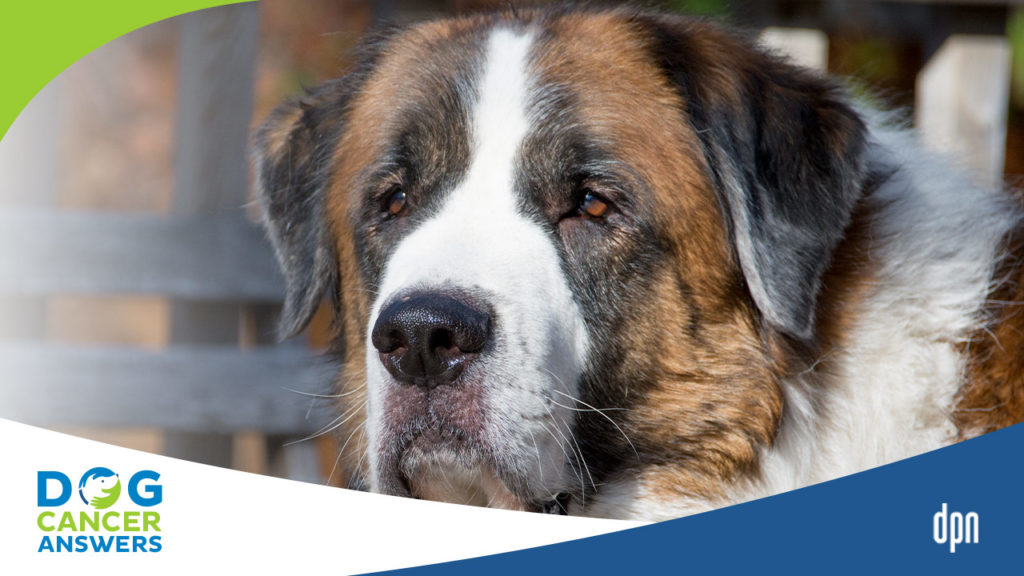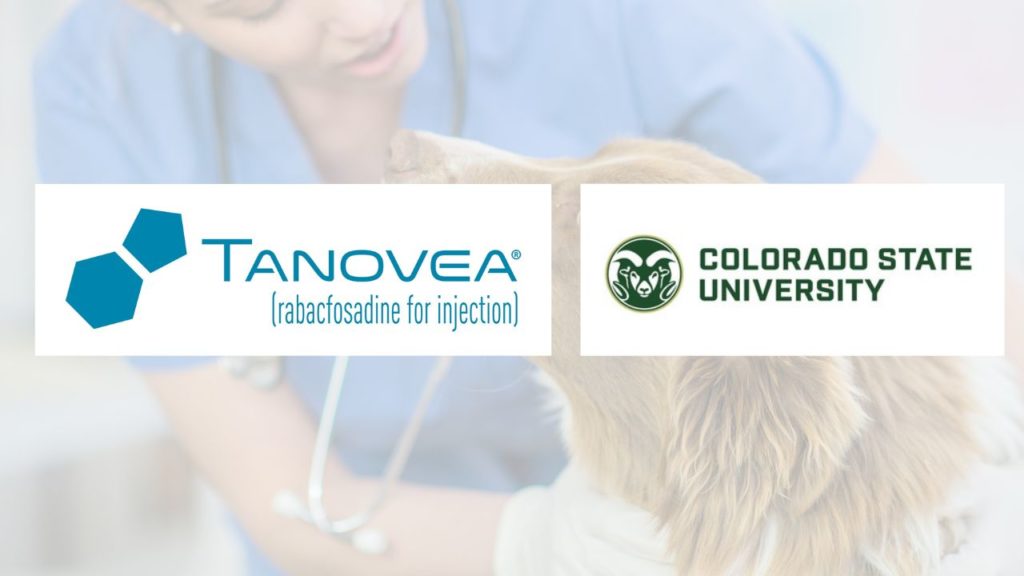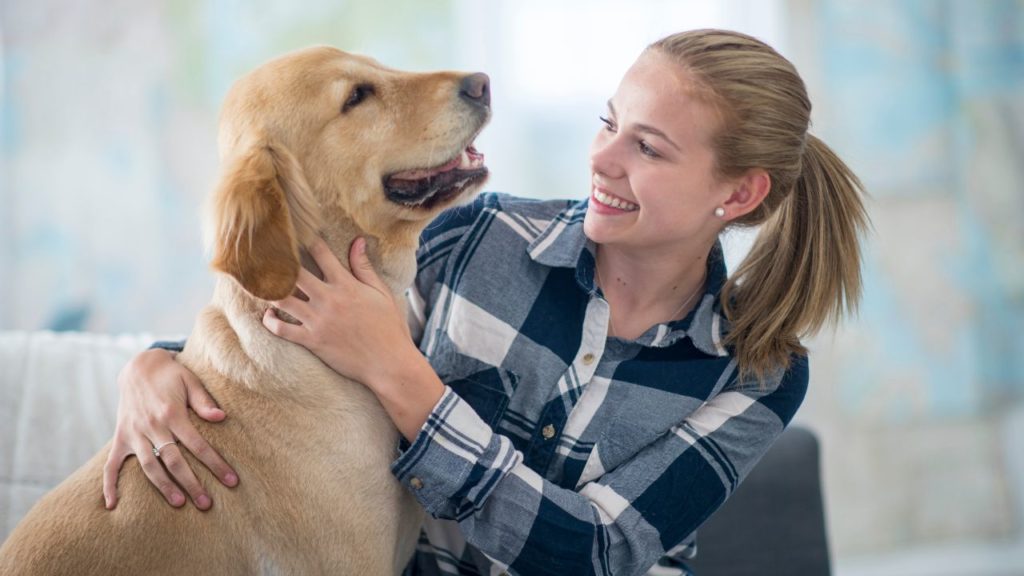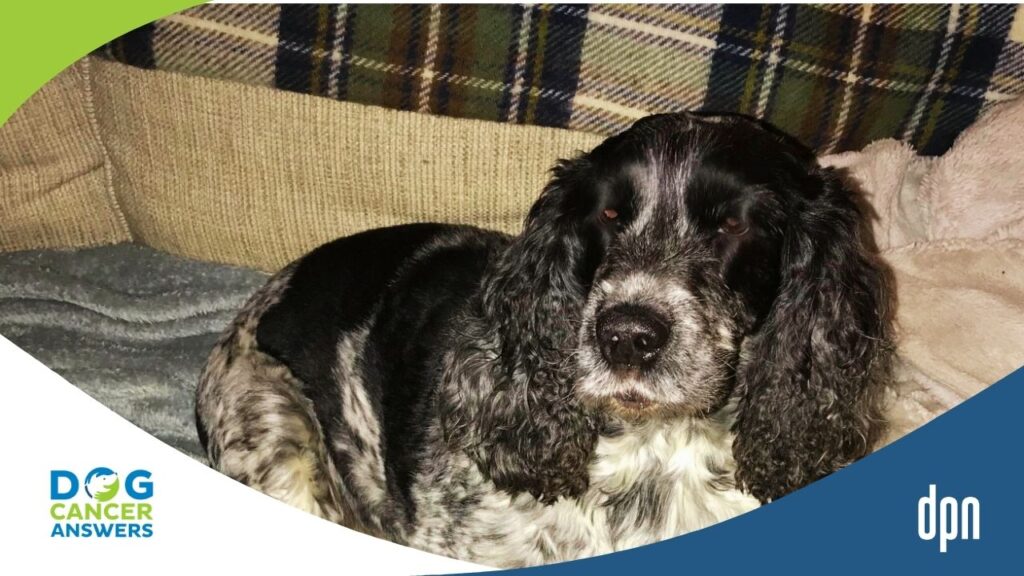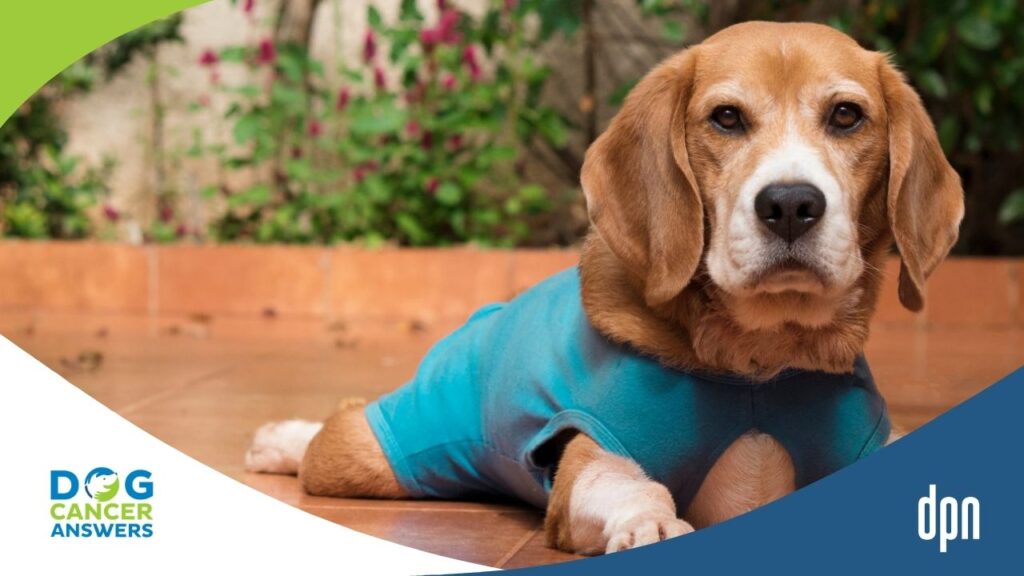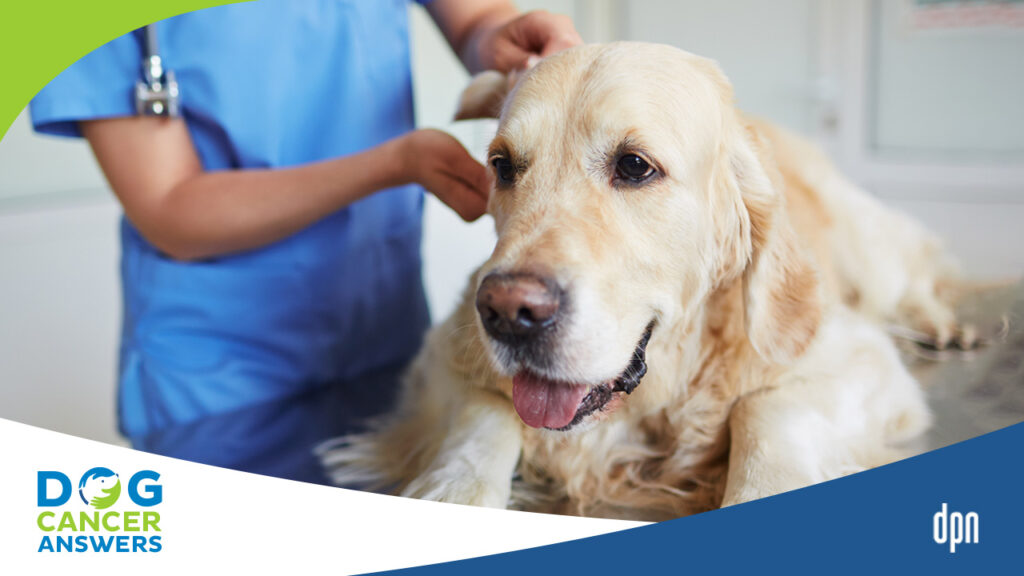James Jacobson: Today on our special exam room series: Lymphoma and what you need to know to help your dog.
Announcer: Welcome to Dog Cancer Answers, where we help you help your dog with cancer. Here’s your host, James Jacobson.
James Jacobson: Hello, friend. Let me start off by saying: I’m sorry. I am sorry that you’re listening to this podcast. Sure, I know that’s an odd thing for a host to say in a welcome message. But the fact that you’re listening to my voice now probably means that you have a dog that has been diagnosed with lymphoma. I have been there and I know what it is like to have a dog who has cancer.
And I also want to let you know that you are in the absolute best place because you’re in good company. Unfortunately, cancer is the number one killer of dogs—but there is a lot of hope. Dogs do not have an expiration date stamped on their forehead. There are so many things that you can do to help your dog after you get a lymphoma diagnosis.
I’m lucky. My veterinarian is Dr. Demian Dressler. He’s the author of the best selling book The Dog Cancer Survival Guide. He is a renowned authority on full spectrum approaches to treating dog cancer.
And today you can come into his exam room and listen to what he would tell one of his clients whose dog was diagnosed with lymphoma.
Dr. Demian Dressler: So if your veterinarian has given your dog a diagnosis of lymphoma, it’s important in the decision making process to have the information. So that’s really the first step. So lymphoma is a white blood cell cancer. Most cancers originate from some normal body cell and in the blood we’ve got red blood cells and we’ve got white blood cells. So lymphoma is actually a cancer of white blood cells. Sometimes it makes a bump on the body. Sometimes it’s in the bloodstream. And most commonly though, we see swollen lymph nodes. Maybe you’ve gotten sick and your glands have gotten swollen. Well, those are lymph nodes. So dogs have glands, too. And these glands are located all over the body.
And one of the hallmarks of lymphoma is a swelling of these glands, or at least most commonly. Lymphoma sometimes will pop up in other body locations, aside from the lymph nodes. And that could be the kidneys or that could be the bone marrow or that could be the liver. Sometimes even the skin or the eye.
So really it’s possible for it pop up anywhere. But when we’re looking at ‘What else should I do? What should I do here when I’m encountering lymphosarcoma for my dog?’ I think it’s important to not just look at the conventional care aspects, but also to remember that there are other parts of the equation that we talk about in The Dog Cancer Survival Guide. So that’s going to be things not only like the chemotherapy, which Dr. Ettinger has discussed in the book in some detail, including the drugs that are commonly used and how things turn out with different types of lymphoma and different types of survival times. But also things again, like diet, the mind-body connection, what supplements we can use. So all of these things, regardless of cancer type, are important to be bringing into the full spectrum approach to dealing with dog cancer so we can have these dogs live a long and happy life.
Now with lymphosarcoma what I will tell people–and I don’t use necessarily that much chemotherapy or radiation and that’s mostly because I’m in Hawaii and it’s not as available–at least the facilities that are necessary. But it’s also, I think, got to do with the fact that people are around, where I work, aren’t as excited about subjects like chemotherapy. Which is understandable in some cases. So lymphosarcoma is one of the cancers where I will really discuss chemotherapy with the guardians. And the reason for that is because you get something out of the deal and your dog can get something out of the deal. It’s probably the most chemo sensitive cancer that we have out there.
And what’s important to understand with lymphosarcoma that sometimes is not discussed is that lymphosarcoma is a circulating cancer. That means the cancer cells are moving around the body and you can’t remove them by cutting them out. That’s not part of the treatment. You can’t really do surgery on them. That’s important to realize. So what we’re left with is trying to give medications or diet or supplements or what have you to try to curb the growth of the cells and to try to create a remission.
But because lymphosarcoma, if you look at all of the dogs that have chemotherapy with this disease, and we say, ‘Oh, okay, well, we can have what’s called a median survival time of between 12 and 14 months using what’s called the Wisconsin protocol, that’s the best that you’re going to get with chemotherapy in the context of dog cancer across the board. That’s about as good as you have it.
And the other thing that’s important to realize that if we combine chemotherapy with other steps, the research shows us that things like dietary modifications and things like the addition of certain supplements can make these dogs do better. with chemotherapy in terms of side effect lessening and in terms of life extension. Well, that’s a really valuable point, I think. And the Survival Guide is very useful for that.
Now, something that I will bring up frequently that’s not usually discussed–and I talk about this in The Dog Cancer Survival Guide–is something that I call gained life expectancy. And the reason why that matters is because when we’re talking about a treatment such as chemotherapy and we say, well, okay, so if we were to do chemotherapy, then we could maybe very roughly approximate, well, 12 months, 14 months or something like that. It’s very rough. You have to acknowledge very rough.
But that’s different if we compare it to a dog that didn’t have any treatments at all. So the question would be ‘What’s the difference in survival time? What’s the game? What does my dog get from the chemo in comparison to if we did no chemotherapy at all? What’s the gain survival time? Hmm. Well, that’s a different question.
And so if we say, well, if we were to give these dogs, say, for example, prednisone only or something like that and we had a median survival time of like some simple treatment, like giving prednisone, then we would say, ‘Well, those guys live, give, or take four months if you look at the population of dogs’ and please remember, thes e numbers do not apply to individual dogs. That’s another important thing. Your dog does not have a lifespan dictated by some paper. That’s not how this works .
But nonetheless, so back to the idea of giving simple treatments: So the gain in survival time for the chemo versus the simple treatment would only be maybe eight months or nine months. So then the question becomes ‘Well, is the chemo worth it for the gain in survival time above what you would do otherwise?’ And that’s an important question because when we’re talking about what we get and what our dog gets versus doing nothing at all or doing something simple, sometimes the gain in survival time pales in desirability in comparison to the survival time at large.
James Jacobson: If you’d like to hear more about dog cancer and what you can do to help your dog now, I encourage you to pick up a copy of Dr. Dressler’s book, which just happens to be the sponsor of today’s episode and this entire special “Exam Room Series” here on Dog Cancer Answers. The name of this best selling book is The Dog Cancer Survival Guide: Full Spectrum Treatments to Optimize Your Dog’s Life Quality and Longevity. The authors of this special book are Dr.s Demian Dressler, who you just heard from, and Dr. Susan Ettinger, an oncologist in New York. And in a minute, I will tell you how to get their book at a discount.
This book is considered the Bible of dog cancer and it covers so much information in an easy to understand, easy to reference guide. For example, the book covers everything that you need to know about conventional veterinary treatments. That’s surgery, chemotherapy, radiation, including how to reduce their side effects. The most effective nonconventional options, including botanical nutraceuticals, supplements, nutrition, and mind-body medicine. And the book helps you to analzye the options and develop a specific plan for your own dog, based on your dog’s type of cancer, dog’s age, your financial budget, your time constraints, as well as your personality.
The Dog Cancer Survival Guide is available wherever fine books are sold– both online and in physical bookstores. Its available either in paperback OR as an e-book edition. And the e-book is under ten dollars. The website to get either the paperback or the ebook is: www.DogCancerBook.com.
And you will save 10%… if you use the promo code “podcast” when you check out, you’ll save 10%. The website again: DogCancerBook.com. Use the promo code “podcast” for 10% off. That is www.DogCancerBook.com.
I wanna let you know that we have lots of free, helpful information on our podcast website. The URL is dogcanceranswers.com. IT’s where you can listen to or download our entire back catalog of episodes. It’s the best way to get the information that you need to optimize your dog’s life quality and longevity.
<<TOUCH TONE SFX>>
Do you have a question for a dog cancer veterinarian? Well, one of our veterinarians could answer your question on a future episode of Dog Cancer Answers. Please call our Listener Line and record your question. The telephone number is 808-868-3200. That is 808-868-3200 or visit our website at DogCancerAnswers.com.
With dog cancer, you wanna get relevant information as quickly as possible. So make sure you get the next episode of our podcast as soon as it’s released by subscribing to Dog Cancer Answers, Apple Podcasts, or your favorite podcast app. We’re also on Spotify as well as YouTube. That’s all for this episode in our Exam Room Series. I’d like to thank Dr. Demian Dressler for being our guest today.
Until next time, I’m James Jacobson. From all of us here at Dog Cancer Answers and all of us here at Dog Podcast Network, I wish all of you a warm Aloha.
Announcer: Thank you for listening to Dog Cancer Answers. If you’d like to connect, please visit our website at DogCancerAnswers.com or call our Listener Line at 808-868-3200.
And here’s a friendly reminder that you probably already know: this podcast is provided for informational and educational purposes only. It’s not meant to take the place of the advice you receive from your dog’s veterinarian. Only veterinarians who examine your dog can give you veterinary advice or diagnose your dog’s medical condition. Your reliance on the information you hear on this podcast is solely at your own risk. If your dog has a specific health problem, contact your veterinarian. Also, please keep in mind that veterinary information can change rapidly. Therefore, some information may be out of date.
Dog Cancer Answers is a presentation of Maui Media in association with Dog Podcast Network.


